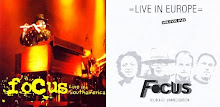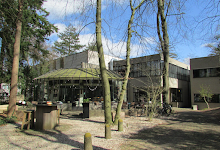Archive number: 4
Title: Anonymus
Main Album: In and Out of Focus
Track number: 4
Genre: Progressive Rock Instrumental
Studio: Sound Techniques Studio, 46a Old Church Street, Chelsea, London SW3
Length: 7' 00"
Composer: Thijs van Leer, Jan Akkerman, Martijn Dresden, Hans Cleuver
Musicians: Jan Akkerman - Electric guitars (Fender telecaster), Handclaps; Thijs van Leer - Hammond organ, Flutes, Piano, Handclaps; Martijn Dresden: Bass, Trumpet, Handclaps; Hans Cleuver - Drums, Handclaps
Producer: Hubert Terheggen (RTM)
Engineer: Jerry Boys
Label: LP - Imperial, Sire, Polydor; CD - EMI Bovema, IRS, Red Bullet
Date of recording/release: Late January 1970/Autumn 1970 (1973 in the US. In 1974 the album appeared in Brazil as Pop Giants). CD – 1988, 1993, 2001.
Title: Anonymus
Main Album: In and Out of Focus
Track number: 4
Genre: Progressive Rock Instrumental
Studio: Sound Techniques Studio, 46a Old Church Street, Chelsea, London SW3
Length: 7' 00"
Composer: Thijs van Leer, Jan Akkerman, Martijn Dresden, Hans Cleuver
Musicians: Jan Akkerman - Electric guitars (Fender telecaster), Handclaps; Thijs van Leer - Hammond organ, Flutes, Piano, Handclaps; Martijn Dresden: Bass, Trumpet, Handclaps; Hans Cleuver - Drums, Handclaps
Producer: Hubert Terheggen (RTM)
Engineer: Jerry Boys
Label: LP - Imperial, Sire, Polydor; CD - EMI Bovema, IRS, Red Bullet
Date of recording/release: Late January 1970/Autumn 1970 (1973 in the US. In 1974 the album appeared in Brazil as Pop Giants). CD – 1988, 1993, 2001.
Alternative version: The piece appears first in the background on the Ramses Shaffy album Sunset Sunkiss. It was later expanded as Anonymous 2 (Focus 3). A live version can be found on the second CD in the Focus 50 Years Anthology.
Notes: This longer ensemble track is the first real hint of things to come. The title is a classical music joke and the piece begins with a mediaeval feel as trumpet, bass and 'marching' snare drums play the opening theme (00:00-00:18) which is from an anonymous 15th century French piece called Le dit Bourgignon. The band then come in and jam for a while (00:19-02:32) using a distinctive 10-note riff repeated on guitar four times. Van Leer's flute in the opposite channel to the guitar (until 01:27) is prominent firstly, then his piano takes over (they overlap, pointing to overdubbing). Next is a bass and drums break (02:34-03:22) based on the riff (a stray guitar is heard at 02:48 and a definite shout at 03:04), followed by a section where the whole band plays and electric guitars take the lead (03:23-04:30). There is again evidence of overdubbing with this as electric guitars are heard from both channels. Next comes a section where drums alternate with electric guitars and bass playing the main riff (04:31-05:01). Eventually the drummer is left to a simple solo (05:02-05:31), which includes an effective caesura or pause (05:23). The band comes back with the riff for the closing section (05:32-06:31), which employs ritardando (slowing down) from 05:48, lots of reverb on the electric guitar. This is all concluded by a longer caesura and Le dit Bourgignon as an Elizabethan or Mediaeval style coda (06:33-07:00) played on flutes and featuring percussive handclaps. (In some recordings the coda finds itself attached to the House of the King track as a prelude, which works fine and is an understandable mistake in dividing things up).
A note on anonymus (from Wikipedia)
Anonymus is the Latin word for anonymous, the correct English spelling. Both words are from a Greek one meaning not named. The Latin spelling is traditionally used by scholars in the humanities to refer to an ancient writer whose name is not known or to a manuscript of their work. Many such writers have left valuable historical or literary records through the ages. Sometimes Anonymus refers not to an author but to a manuscript copyist. Anonymous IV refers to a 13th Century English student of medieval music theory whose works are a major source for modern scholars of that era.





















No comments:
Post a Comment